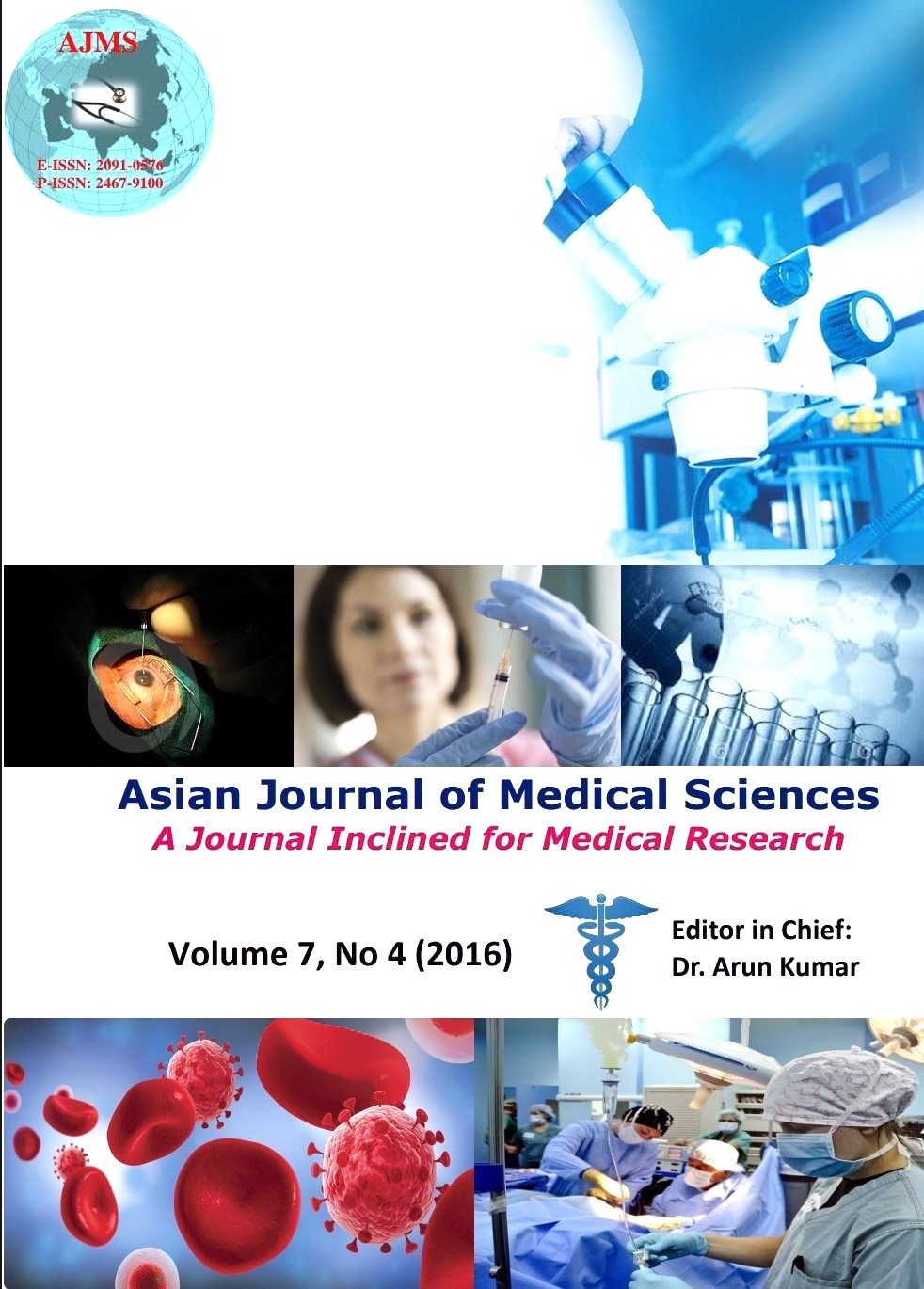Medications adherence level and its associated factors among hypertensive patients at a major referral hospital, in Riyadh, KSA
Keywords:
Hypertension, adherence, medications, associated factors, Saudi Arabia.Abstract
Aims and Objectives: To quantify the level of medications adherence among hypertensive patients and to identify factors of poor adherence.
Materials and Methods: A cross sectional study was conducted during October 2013 to March 2014 in King Khalid University Hospital, Riyadh, KSA. Self-administrative questionnaires were used among 310 randomly selected hypertensive patients. Morisky adherence questionnaire was used to quantify adherence level of medications. Adherence scores were categorized as poor and high adherence. Bi-variate and multivariate analysis were used to identity factors associated with poor adherence.
Results: Out of 287 patients who had responded, 124(44%) were of less than 50 years of age. Prevalence of poor adherence to medications was 55%. Age, educational status, monthly income, time of diagnosis, self-perception of health status, regular checkup at clinics, & regular blood pressure checkup were significantly associated with ‘level of adherence (poor and high) to medications. The independent associated factors of poor adherence were: age (<50 years): 2.30 (95% confidence interval(CI): 1.29,4.10), monthly income (<5000 Saudi Riyals): 6.58(1.67,25.97), self-perception of health status (uncontrolled): 2.66 (1.20,5.90), and regular checkup at clinics (No): 5.57(2.83,10.97).
Conclusion: Level of adherence was low among hypertensive patients. Associated factors of poor adherence could be used to identity patients for counselling in improving level of adherence to medications.
Asian Journal of Medical Sciences Vol.7(4) 2016 24-30
Downloads
Downloads
Published
How to Cite
Issue
Section
License
Authors who publish with this journal agree to the following terms:
- The journal holds copyright and publishes the work under a Creative Commons CC-BY-NC license that permits use, distribution and reprduction in any medium, provided the original work is properly cited and is not used for commercial purposes. The journal should be recognised as the original publisher of this work.
- Authors are able to enter into separate, additional contractual arrangements for the non-exclusive distribution of the journal's published version of the work (e.g., post it to an institutional repository or publish it in a book), with an acknowledgement of its initial publication in this journal.
- Authors are permitted and encouraged to post their work online (e.g., in institutional repositories or on their website) prior to and during the submission process, as it can lead to productive exchanges, as well as earlier and greater citation of published work (See The Effect of Open Access).




